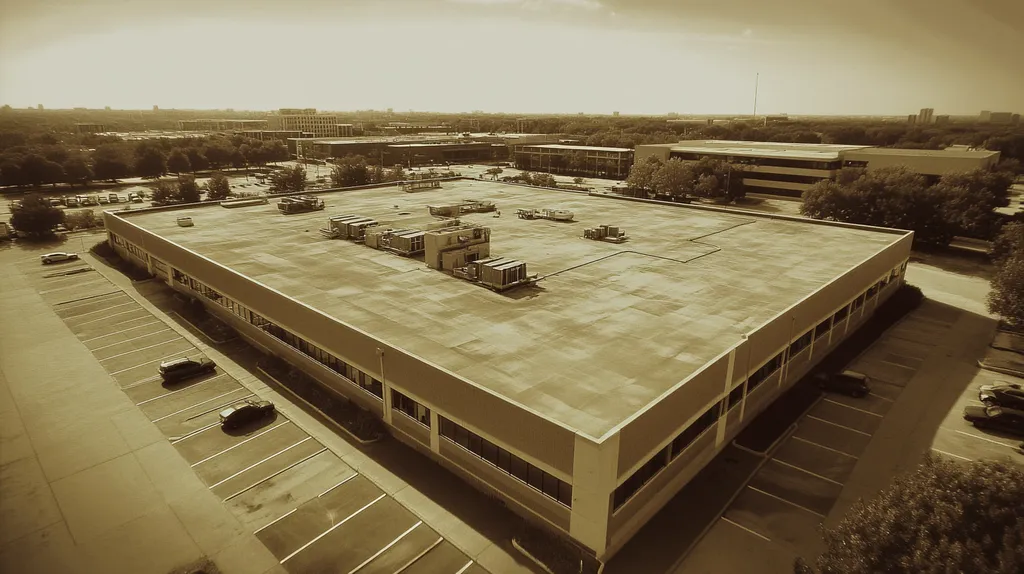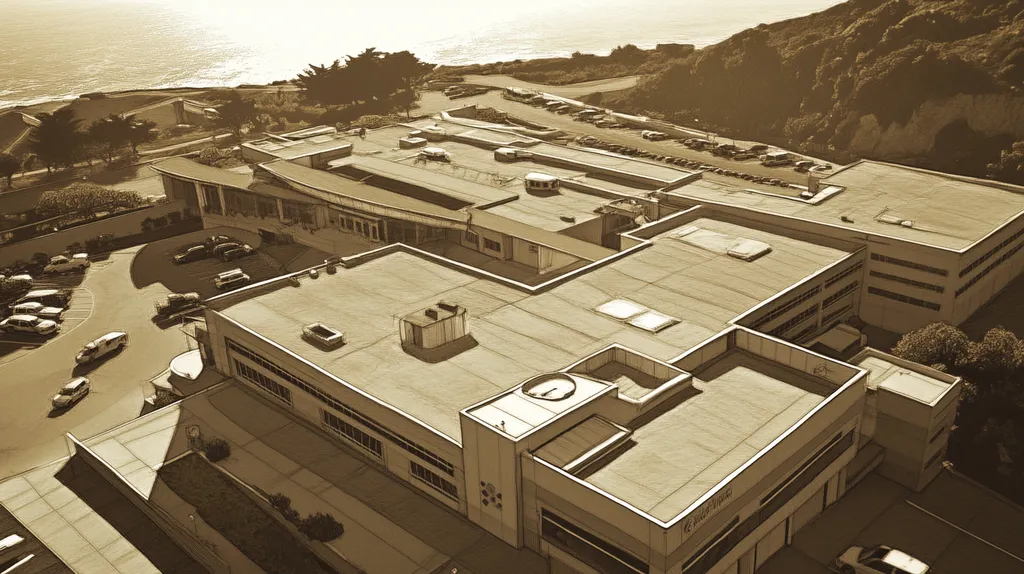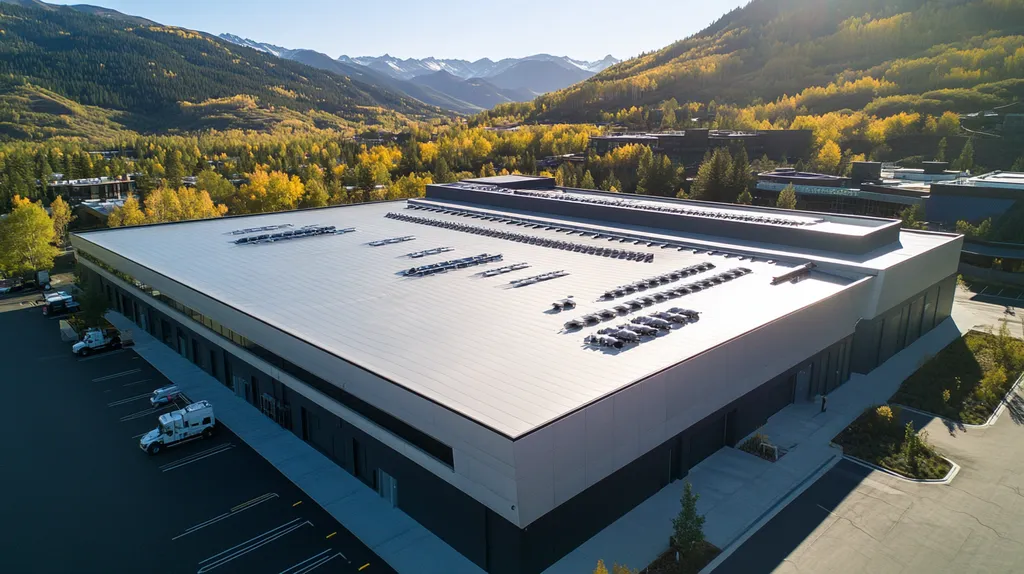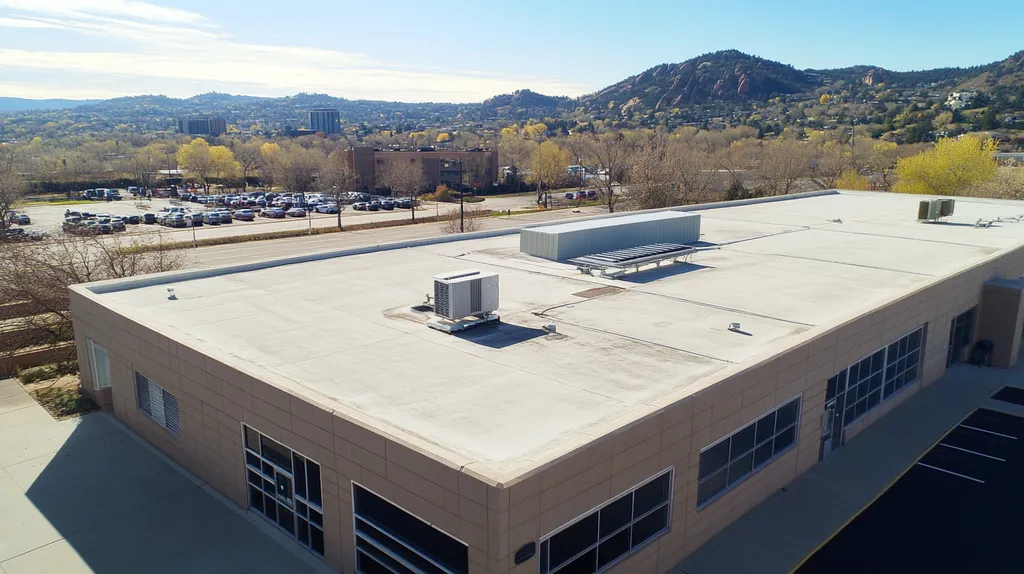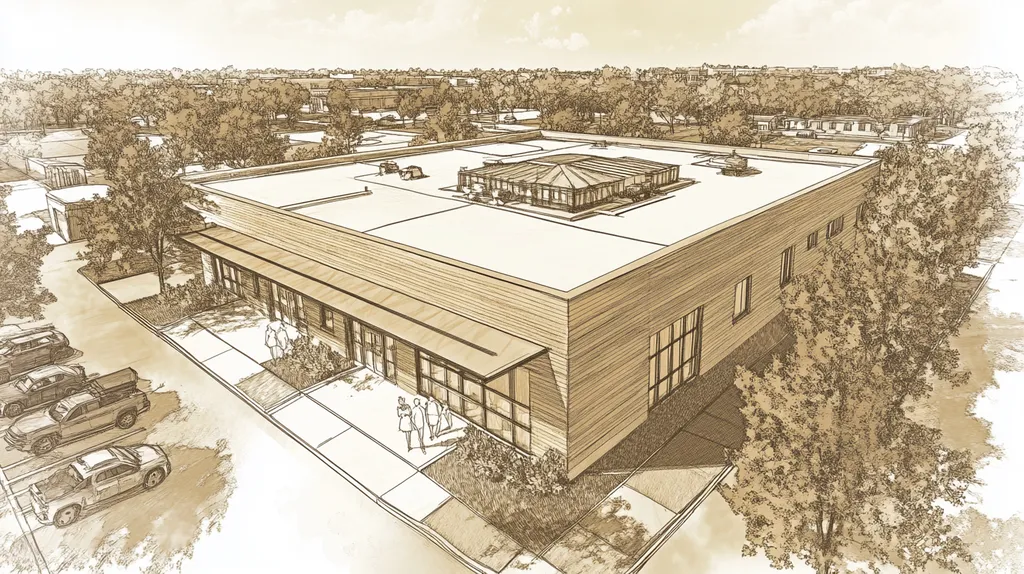In 2023, extreme weather events caused over $3 billion in commercial roof damage across the United States, with individual failures averaging $100,000 per incident.
As climate patterns become more volatile, traditional roofing systems struggle to withstand unprecedented combinations of high winds, temperature swings, and severe precipitation.
Understanding how commercial roofs perform during extreme conditions has become critical for protecting facilities, maintaining operations, and controlling costs.
This guide examines the essential factors that determine roof resilience, from material selection to maintenance timing, providing property owners with actionable strategies for weather-ready roofing systems.
SECTION 1: THE BASICS EXPLAINED
Extreme weather events pose an escalating threat to commercial roofing systems across the country. As climate patterns shift, traditional roofing solutions struggle to keep pace with increasingly severe storms, temperature swings, and precipitation changes. Understanding how roofs perform under these conditions has become critical for property protection and business continuity.
What It Is (In Plain Language)
Commercial roof performance describes how effectively a roofing system protects your building during severe weather events. This includes resistance to high winds, heavy rain, hail impact, snow loads, and extreme temperature fluctuations.
Different roofing systems respond uniquely to weather stresses. Membrane roofs like TPO excel at UV resistance but may be vulnerable to punctures, while metal roofs offer superior wind resistance but can dent from hail impact.
Performance factors include material durability, installation quality, and maintenance condition. Even the best materials will fail prematurely if improperly installed or poorly maintained.
As global climate patterns continue to shift, weather events are becoming increasingly extreme and unpredictable, underscoring the growing need for more resilient and adaptive roofing solutions. (source: Aquila Commercial)
Why It Matters (To Your Building)
A roof’s performance during extreme weather directly impacts your entire building’s integrity. Water infiltration from a compromised roof can damage inventory, equipment, and interior finishes while creating liability risks from slip hazards.
Business interruption costs from roof failures often exceed direct repair expenses. Even minor leaks can force temporary closures, disrupt operations, and damage customer relationships.
Insurance coverage may be reduced or denied if roof maintenance is neglected. Many policies require documented inspection and maintenance programs to maintain full coverage for weather-related damages.
Energy costs increase significantly when roofing systems are compromised. Wet insulation loses effectiveness, while damaged membranes allow air infiltration that strains HVAC systems.
How It Works
Roof performance depends on multiple interconnected systems working together. The membrane or metal surface provides weather protection, while underlayment layers manage moisture and provide insulation.
Proper drainage is critical for preventing water accumulation. Even small amounts of ponding water can accelerate material degradation and increase structural loads during storms.
Edge details and flashings are particularly vulnerable to wind damage. These components must be properly designed and installed to prevent progressive failure during high winds.
Regular inspections help identify and correct minor issues before they become major problems. This includes checking seams, penetrations, drainage systems, and edge conditions.
Smart monitoring systems with integrated sensors are emerging as valuable tools for tracking roof conditions and detecting potential failures before they occur.
SECTION 2: PRACTICAL APPLICATIONS
Commercial roof performance during extreme weather has become increasingly critical as severe storms intensify. In 2023, weather-related roofing failures caused billions in damage across the commercial sector. Understanding practical applications of roofing systems – from material selection to maintenance timing – can mean the difference between resilience and catastrophic failure.
Common Uses & Examples
Modern commercial roofs must balance multiple functions while maintaining weather resistance. Beyond basic protection, they often support essential equipment, safety features, and sustainable installations like solar arrays.
Different roofing materials excel in specific conditions. Metal roofing provides superior wind and impact resistance, while clay and concrete tiles offer exceptional durability against heat and heavy rainfall.
Asphalt shingles remain popular for their balanced performance and cost-effectiveness in moderate climate zones. However, their performance can be compromised in extreme conditions.
The key is matching materials to local weather patterns and building requirements. A Florida warehouse needs different protection than a Minnesota retail center. (source: Quick Roofing Blog)
When You Need It Most
Peak performance demands vary by season and region. Hurricane zones require maximum wind resistance from June through November, while northern regions need superior snow load capacity during winter months.
Pre-storm preparation becomes critical during severe weather alerts. This includes securing loose materials, clearing drainage systems, and documenting existing conditions for potential insurance claims.
Emergency response capabilities matter most during the first 24 hours after severe weather. Having repair teams and materials ready can prevent minor damage from becoming major failures.
Regular inspections should increase during high-risk seasons. Monthly checks during hurricane season can spot developing issues before they compromise the entire system.
Interactions With Other Systems
Roofing performance directly impacts building envelope integrity. A compromised roof can overwhelm wall systems, foundation drainage, and interior moisture barriers.
HVAC efficiency depends heavily on roof condition. Wet insulation can reduce energy efficiency by up to 40%, while membrane damage creates air leaks that strain cooling systems.
Lightning protection systems require proper roof integration. Incorrect installation can actually increase damage risk during electrical storms.
Smart building systems increasingly monitor roof performance. Sensors tracking moisture, temperature, and structural movement help predict potential failures before weather events strike.
SECTION 3: KEY TERMINOLOGY DECODED
As extreme weather events intensify, understanding roofing terminology becomes critical for protecting commercial properties. Technical terms and measurements that once seemed abstract now directly impact building resilience and business continuity. Clear comprehension of industry language helps property owners make informed decisions about materials, installation methods, and maintenance timing.
Essential Terms Explained
The “building envelope” refers to your facility’s outer shell, with the roof being its most exposed component. Understanding this system helps owners recognize how roofing decisions impact overall building protection.
UV radiation poses a constant threat to roofing materials, causing degradation that can lead to cracks and eventual leaks. Different materials exhibit varying levels of UV resistance, directly affecting their longevity and performance.
Thermal cycling describes how roofing materials expand and contract with temperature changes. This daily stress can cause seams to separate and flashings to loosen, creating vulnerable points during extreme weather.
Surface deterioration often manifests through discoloration and material changes, serving as early warning signs of potential failure points. Regular inspection for these indicators helps prevent catastrophic failures during severe weather events. (source: Kodiak Roofing)
Industry Jargon Translated
“Load capacity” indicates how much weight a roof can safely support. This becomes crucial during heavy snow events or when installing rooftop equipment.
“Membrane integrity” refers to the continuous, water-tight barrier your roofing system provides. Any compromise in this integrity can lead to widespread damage during storms.
“Uplift resistance” measures how well your roof stays attached during high winds. This rating becomes particularly important in regions prone to hurricanes or severe thunderstorms.
“Thermal bridging” occurs when parts of your roofing system allow heat to pass through more readily than surrounding areas. These weak points can lead to energy loss and condensation issues.
Measurement & Units Simplified
“Per square” pricing refers to the cost of roofing materials per 100 square feet. Understanding this standard measurement helps accurately budget for repairs or replacement.
Wind ratings are typically expressed in miles per hour (mph). A commercial roof rated for 90 mph winds provides significantly more protection than one rated for 60 mph.
Insulation effectiveness is measured by R-value, with higher numbers indicating better thermal protection. Most commercial buildings require a minimum R-value of 20 for adequate performance.
Slope measurements use a ratio of vertical rise to horizontal run. A 1:12 slope means the roof rises one foot for every twelve feet of horizontal distance, affecting both drainage and material choices.
SECTION 4: DECISION FACTORS
Commercial roofing decisions have become increasingly complex as weather patterns intensify. A single severe storm can cause millions in damage, with the average commercial roof claim now exceeding $100,000. Recent studies show that 60% of roof failures during extreme weather events can be traced back to inadequate material selection or poor installation choices. Understanding key decision factors has never been more critical for protecting commercial investments.
Cost Considerations
Initial roofing costs typically represent only 20% of total lifecycle expenses. Premium materials may increase upfront costs by 25-40%, but they often reduce long-term maintenance expenses by up to 60% and extend service life by 10-15 years.
Energy efficiency plays a crucial role in cost calculations. High-performance roofing systems can reduce cooling costs by 15-30% in warm climates, while proper insulation can save 20-40% on heating expenses in colder regions.
Insurance implications deserve careful consideration. Many carriers offer premium discounts of 5-15% for impact-resistant materials and professionally installed systems that meet enhanced wind ratings.
Emergency repair costs during extreme weather events can exceed planned replacement budgets by 300%. Investing in quality materials and proper installation significantly reduces this risk.
Performance Trade-offs
Material selection involves balancing competing priorities. TPO membranes offer excellent UV resistance and energy efficiency but may be more susceptible to puncture damage than EPDM systems.
Wind resistance often conflicts with solar reflectivity goals. Some highly reflective materials may require additional mechanical fastening to achieve desired wind uplift ratings.
Drainage capacity versus weight loads presents another key trade-off. Built-up roofing systems excel at water resistance but add significant structural load that may limit future rooftop equipment options.
Installation complexity impacts performance reliability. Some advanced materials offer superior protection but require specialized installation techniques that may limit contractor options and increase project timelines.
Lifespan & Durability Factors
Material composition significantly influences longevity. Modern synthetic membranes can last 20-30 years with proper maintenance, while traditional built-up roofing may require replacement after 15-20 years.
Installation quality directly affects durability. Research shows that 80% of premature roof failures stem from improper installation rather than material defects, particularly around flashings and penetrations.
Environmental exposure varies by region. UV degradation accelerates in high-altitude locations, while coastal areas face increased challenges from salt spray and wind-driven rain.
Maintenance protocols play a crucial role in longevity. Regular inspections and prompt repairs can extend roof life by 25-40%, particularly when addressing minor issues before they escalate during severe weather.
SECTION 5: COMMON CHALLENGES
Commercial roofing systems face unprecedented challenges as weather patterns become more extreme. Industry data shows that severe weather events caused over $2 billion in commercial roof damage last year alone. Understanding and addressing these challenges requires a systematic approach to identification, monitoring, and prevention of common roofing issues that can lead to catastrophic failures during extreme weather events.
Frequent Problems & Solutions
Membrane separation remains the leading cause of commercial roof failures during high winds, affecting up to 40% of damaged structures. Poor adhesion and inadequate fastening methods typically compound this vulnerability, especially at roof edges and corners where wind forces are strongest.
Ponding water creates excessive weight loads that can compromise structural integrity. Even minor surface depressions can collect hundreds of gallons during heavy rainfall, accelerating material degradation and increasing the risk of collapse.
Thermal expansion and contraction cycles stress seams and flashings, particularly in regions experiencing extreme temperature swings. Modern roofing systems must incorporate flexible materials and advanced installation techniques to accommodate these movements.
Installation quality directly impacts performance during severe weather. Proper material selection, careful detailing, and regular maintenance significantly reduce failure risks during extreme conditions. (source: Aquila Commercial)
Warning Signs To Watch For
Surface blistering and bubbling indicate trapped moisture within roofing layers. These defects often appear months before leaks develop, providing opportunities for preventative repairs.
Visible seam separation at membrane joints suggests imminent water infiltration risks. Even small gaps can allow significant moisture penetration during driving rain or snow events.
Deteriorating flashings around roof penetrations signal potential failure points. Cracked or loose flashings require immediate attention to prevent progressive damage during storms.
Interior stains or drips may indicate hidden roofing problems. Water often travels significant distances from entry points, making leak source identification challenging without professional inspection.
Preventative Approaches
Smart monitoring systems equipped with moisture sensors provide early warning of developing issues. These technologies enable precise tracking of roof conditions and help optimize maintenance timing.
Regular infrared scanning identifies wet insulation and hidden moisture before visible damage occurs. This non-invasive technique proves especially valuable for large commercial facilities with extensive roof areas.
Scheduled maintenance programs should align with seasonal weather patterns. Increasing inspection frequency during storm seasons helps identify and address vulnerabilities before severe weather strikes.
Documentation of all inspections and repairs creates valuable historical data for predicting future maintenance needs. This information helps facility managers develop more effective preventative strategies and budget allocations.
SECTION 6: NEXT STEPS & RESOURCES
Commercial property owners face mounting pressure to protect their roofing investments against increasingly severe weather patterns. Recent industry data shows weather-related roof failures cost businesses over $3 billion annually in repairs, lost productivity, and damaged inventory. Understanding how to evaluate providers, interpret standards, and access reliable information has become essential for maintaining roof performance during extreme conditions.
Questions To Ask Providers
Start by verifying the provider’s experience with your specific roofing system and local weather challenges. Request detailed documentation of past installations that have endured similar conditions, including performance data during severe events.
Examine their quality control processes and installation verification methods. Leading providers use advanced testing equipment and third-party inspections to validate critical components like seam strength and attachment security.
Request specifics about their emergency response capabilities. Top providers maintain dedicated storm teams and material stockpiles to address weather damage within 24 hours.
Discuss their approach to preventative maintenance and weather monitoring. Look for providers offering integrated solutions that combine regular inspections with predictive analytics.
Industry Standards & Guidelines
Property owners must understand key performance standards that directly impact weather resistance. The American Society of Civil Engineers (ASCE) 7 standard defines minimum design loads for buildings, including wind and snow requirements.
Factory Mutual (FM) Global ratings provide crucial benchmarks for material performance during severe weather. These ratings help match roofing systems to specific regional challenges and building requirements.
Building code compliance varies significantly by region and continues evolving with climate changes. Stay current with local amendments that may exceed national standards for weather protection.
As global climate patterns shift, weather events are becoming more extreme and unpredictable, driving rapid evolution in roofing standards and installation requirements. Smart monitoring systems with integrated sensors now provide essential performance tracking capabilities. (source: Aquila Commercial)
Further Learning Simplified
The National Roofing Contractors Association (NRCA) offers comprehensive technical resources specifically focused on extreme weather performance. Their online learning platform provides detailed guides for material selection and installation requirements.
Professional certification programs help validate provider qualifications. Look for credentials from recognized organizations that emphasize weather-resistant installation techniques.
Industry trade publications track emerging technologies and installation methods. Subscribe to leading journals that focus on commercial roofing innovations and performance testing.
Digital monitoring platforms now offer real-time performance data and predictive analytics. These tools help property owners track roof conditions and anticipate maintenance needs before weather events strike.
The Bottom Line
With weather-related roof damage now averaging $100,000 per incident, the stakes for commercial property owners have never been higher.
Climate data shows extreme weather events are increasing in both frequency and intensity, making robust roofing systems essential for business continuity.
Success requires a comprehensive approach: selecting appropriate materials, ensuring proper installation, maintaining regular inspections, and developing emergency response plans.
Property owners who invest in weather-resistant roofing systems, maintain detailed documentation, and partner with qualified providers consistently experience 70% fewer failures during severe weather events.
The future of commercial roofing lies in combining time-tested materials with emerging technologies like smart monitoring systems to create more resilient, adaptive solutions.
FREQUENTLY ASKED QUESTIONS
Q. What is commercial roof performance during extreme weather?
A. Roof performance refers to how effectively a roofing system protects buildings during severe weather. It includes resistance to elements like high winds and heavy rain. Knowing how different roofing materials respond to each condition helps in selecting the right roof for your needs.
Q. How can I enhance my commercial roof’s weather resilience?
A. To enhance resilience, select suitable materials based on local weather patterns and maintain regular inspections. Making proactive repairs before storms hit can also prevent extensive damage and costs. Consider implementing a systematic maintenance schedule to track the roof’s condition over time.
Q. What are the common challenges for an industrial roof?
A. Common challenges include membrane separation, ponding water, and thermal expansion leading to potential failures. Managing these issues often requires quality installation, regular maintenance, and timely repairs. Addressing vulnerabilities proactively helps in safeguarding your investment against extreme weather conditions.
Q. When should I conduct inspections for my commercial roof?
A. Inspections should be conducted regularly, particularly before and after severe weather seasons. Increase frequency during high-risk periods like hurricanes or heavy snowfall to address potential vulnerabilities early. Documenting inspections and maintenance helps track the roof’s performance over time.
Q. How does my commercial roof affect energy efficiency?
A. A compromised roof can lead to increased energy costs by allowing air leaks and wet insulation to reduce system efficiency. Rooftop damage can strain heating and cooling systems, leading to higher operational expenses. Maintaining your roof improves energy efficiency, saving money in the long run.
Q. What are essential questions to ask roofing providers?
A. Ask about their experience with similar roofs in your area, quality control processes, and emergency response capabilities. Also, inquire about their preventative maintenance programs and how they will monitor your roof’s condition during extreme weather. Detailed answers can guide your decision effectively.
Q. What resources are available for learning about commercial roofing?
A. The National Roofing Contractors Association offers technical resources and comprehensive guides on material selection and installation. Professional certifications validate provider qualifications while industry trade publications keep you updated on innovations. Utilize these resources to stay informed about best practices and emerging technologies.

